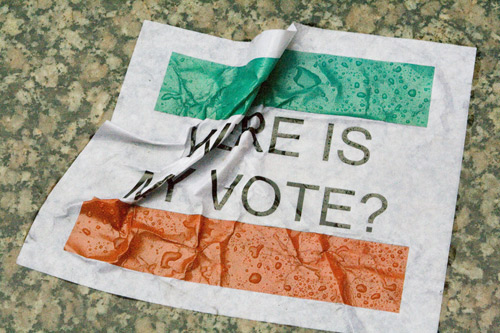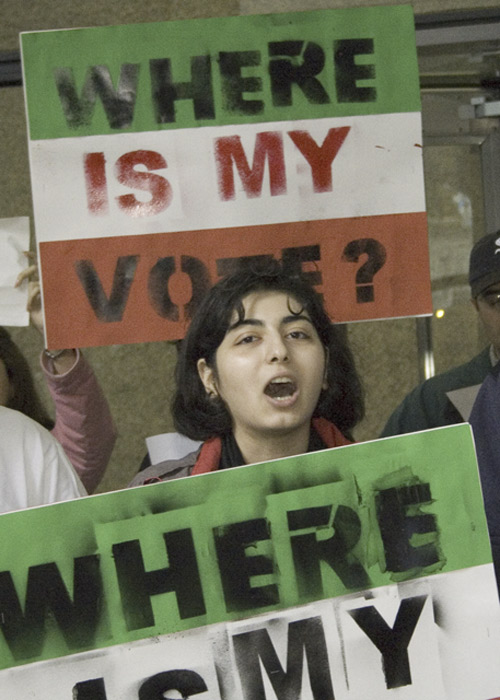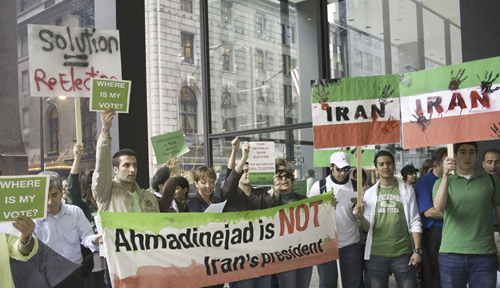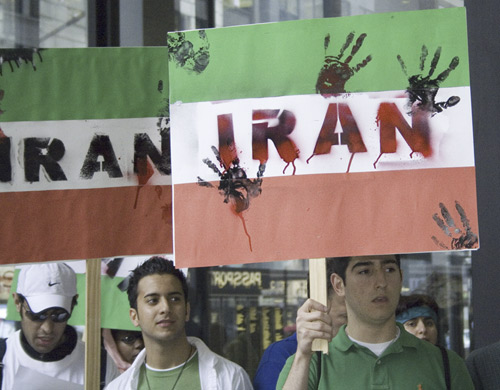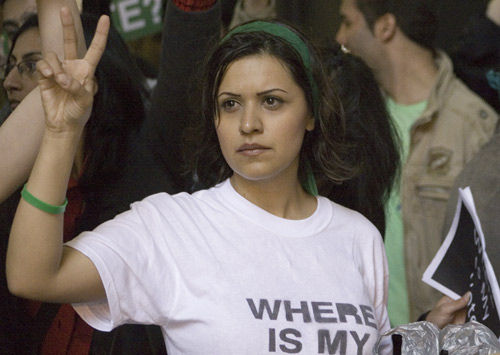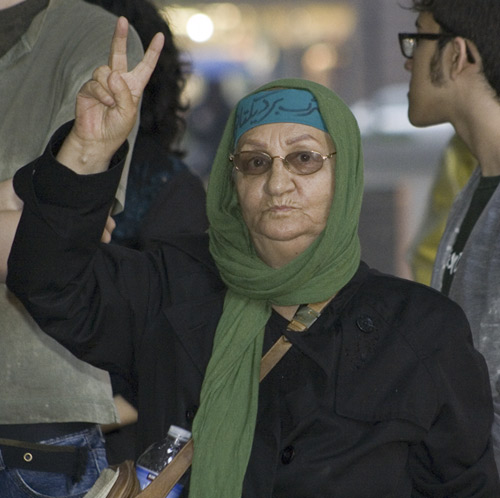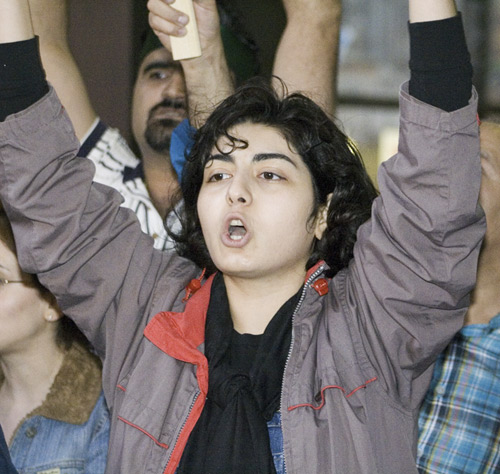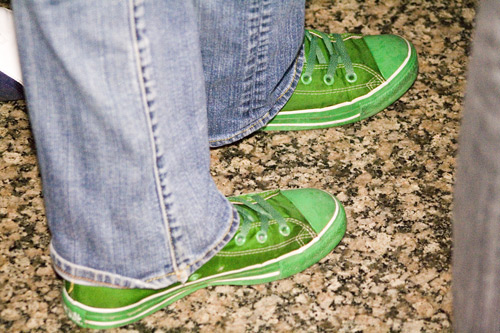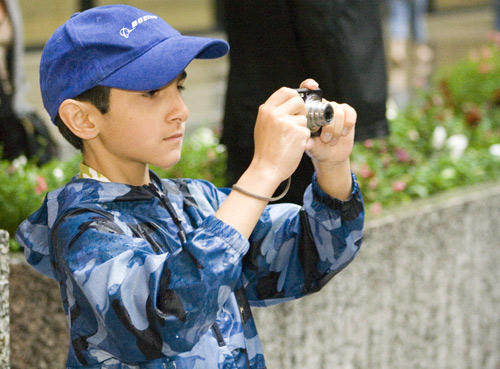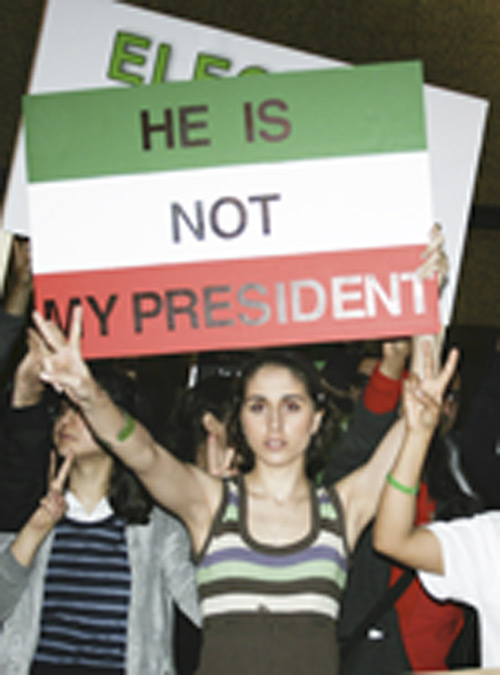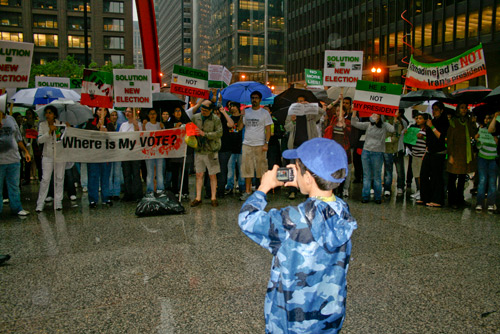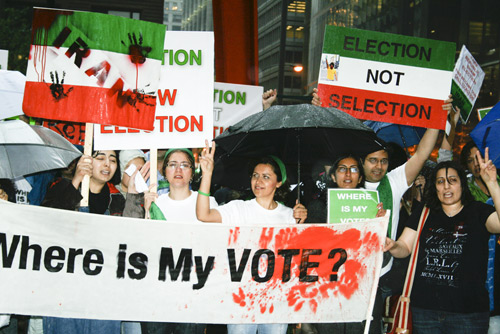Iranians in Chicago: "Where is My Vote?" "No More Violence!"
By Kate Gardiner in News on Jun 17, 2009 2:00PM
"I've spent all my life in America," said Saman, 29. "But I feel connected to everything back there. And it's clear from what we're hearing that something is wrong with the elections [in Iran.]" Saman, who gave only his first name, said his mother was singing the Iranian national anthem along with the protesters via cell phone for most of Tuesday afternoon as a fraction of Chicago's Iranian community rallied in protest of the allegedly falsified elections. "She knows all the words, [to the song, Sorud-e Melli-ye Iran]" he said. "They left Iran before the [1979] Revolution." Saman said he had to read the Persian lyrics, supplied by organizers, to keep up with her.
He, and his mother via phone from South Bend, Ind., joined more than 250 protesters in the pouring rain, singing the anthem, and chanting "Where is my vote?" Many carried placards, reading "Stop the Violence," and "He is Not My President," referring to incumbent President Mahmoud Ahmadinejad in wake of the country's disputed June 12 presidential elections.
In Chicago, many protesters wore dark green headbands that bore the name, in Persian, of lead opposition candidate Mir Hussein Moussavi. Almost all were vehemently in favor of a moderate solution to the disputed elections. "We just want them to do a re-election," said one demonstrator. "It was done wrong, and it's unclear who really won."
"The violence was just injury added to insult," said Elnaz Baum-Snow, 29. "In some places, the votes added up to 110 percent. Mayor Daley, the first one, would've looked at the votes funny. It's pretty clear that the numbers are off."
"If the president really had 63 or more percent of the vote, and the vote was 85 percent of the people," she said. "Then why does he need to stop the demonstrations?"
At least seven demonstrators are reported to have died in Tehran over the course of the past two days as clashes between protesting civilians and national security apparently ended in shooting. As the state-controlled media and international press have been cut off, silencing more traditional sources of information, civilians have moved to a variety of social networking sites, including micro-blogging services like Twitter, and Facebook, for information and organizing rallies throughout the country.
Baum-Snow said she came to the States for graduate school. "It's been hard to get in touch with home," she said. "I tried calling a lot, around 8 p.m. their time, and it was impossible." Baum-Snow said the media has been failing the Iranians who are trying to get their voices heard. "[The state] keeps restricting everyone, the foreign press," she said. "The States should step in, provide communications platforms for the people so that their voices can be heard. Make friends with the people... it's a gesture of good will." She, and other protesters in Chicago, said that this was the first time they'd used Twitter and Facebook with any regularity, but that the social media platforms were their only option for updates from back home.
"Cable news, it's nothing," she said. "We've been looking at the New York Times, at the Huffington Post. But the only thing going really is Twitter and Facebook, sometimes." In Chicago, the majority of Tuesday's rally was organized through local blogs, including the Windy Citizen, and through a constantly updated post on the Web site of local television channel CBS2.
Amir Normandi, an Iranian photographer whose studios were across the street from Federal Plaza, came down to the rally to shoot images. He said he wondered why the Iranian government was even bothering to have elections "If the Supreme Leader is going to just handpick the next president... why bother voting?"
There were between six and 10 thousand Iranians in the city of Chicago in 2000, according to the Encyclopedia of Chicago.
Click here for more photos from Tuesday's rally.
